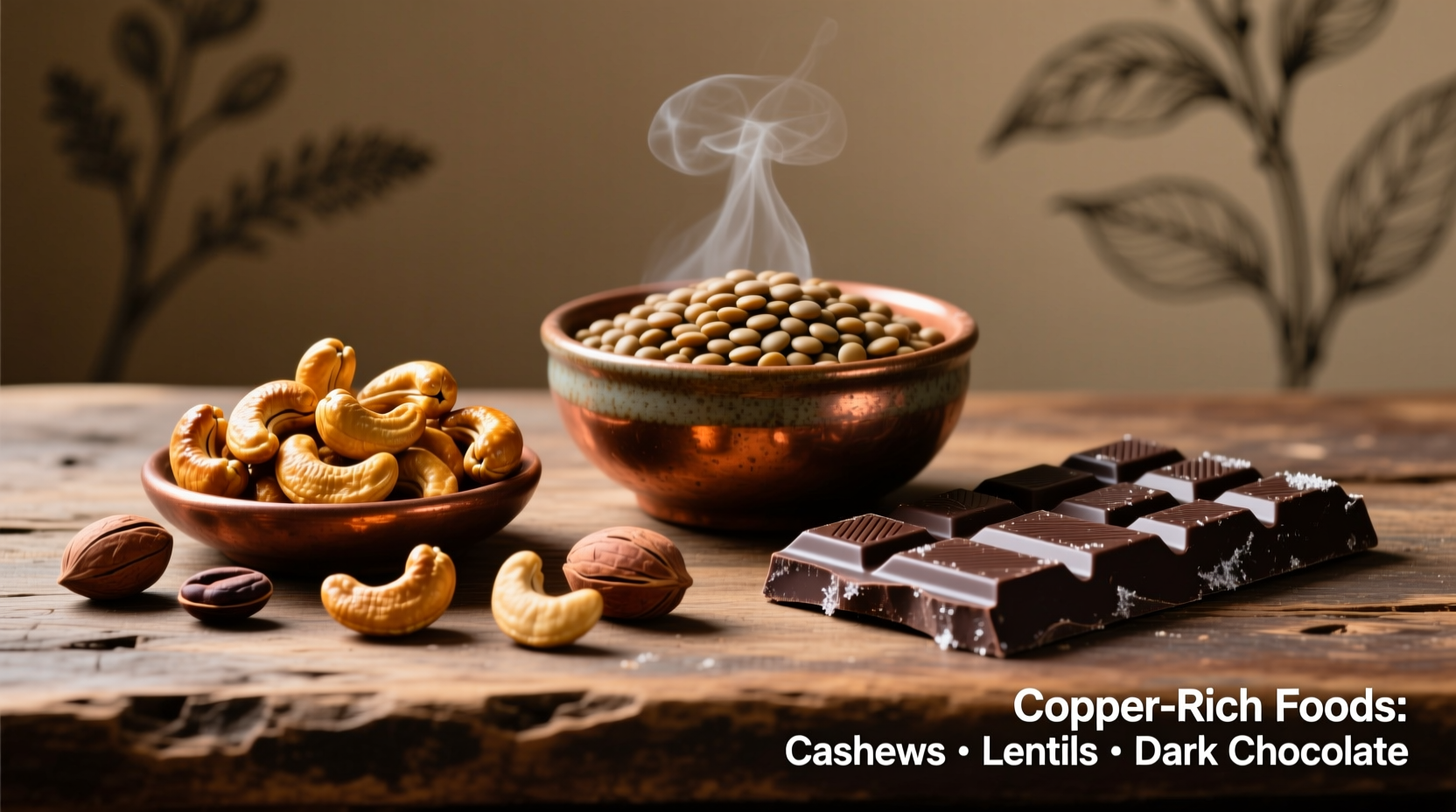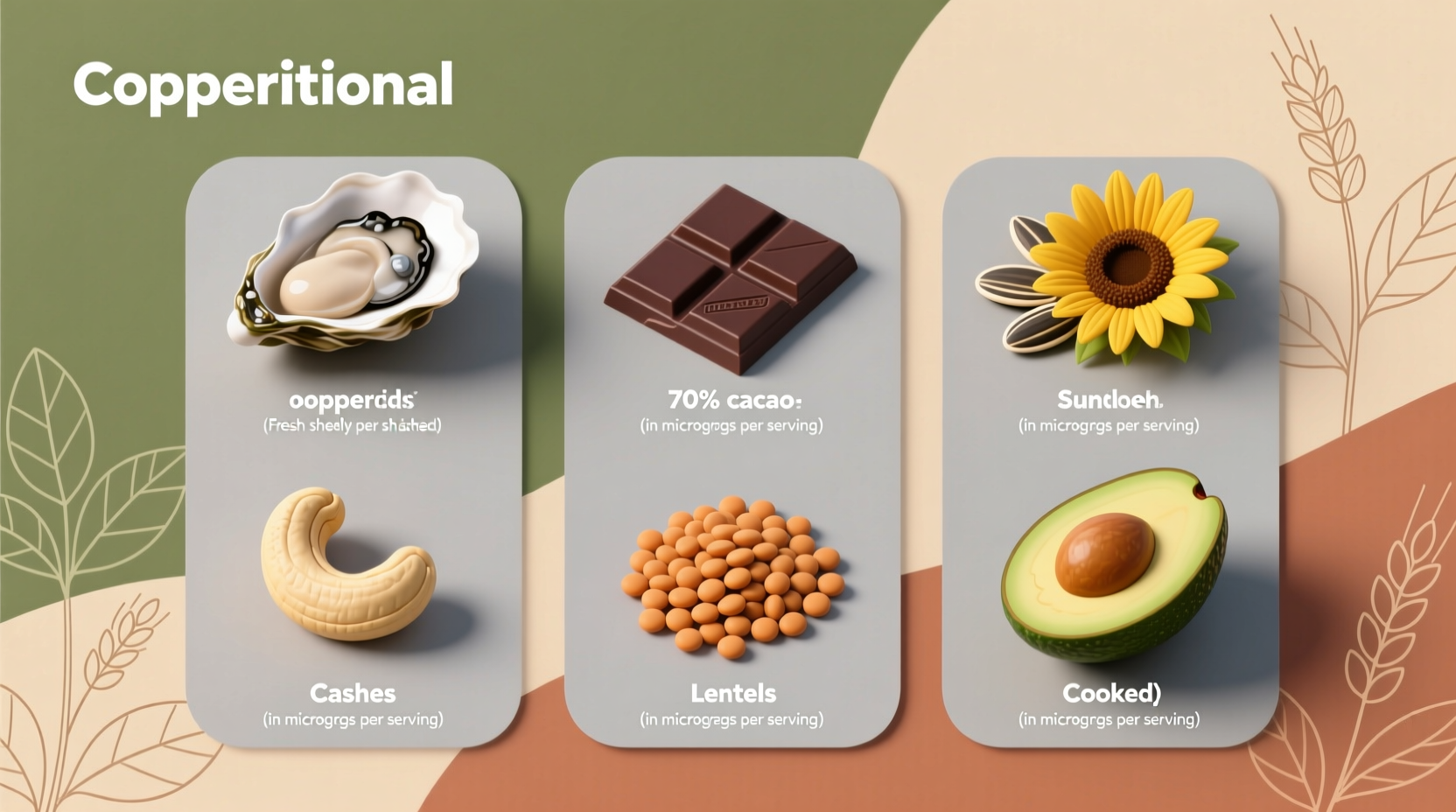Discover exactly which foods deliver the most bioavailable copper, how much you actually need, and practical ways to incorporate these nutrient powerhouses into your daily meals. This guide cuts through the confusion with science-backed information you can trust.
Why Copper Matters More Than You Think
Copper often flies under the radar compared to more famous nutrients, but this essential trace mineral plays critical roles in your body. It helps form red blood cells, maintain healthy bones and blood vessels, and supports your immune system. Your body can't produce copper on its own, so getting enough through your diet is crucial.
The National Institutes of Health recommends 900 micrograms of copper daily for adults. Yet studies show many people fall short of this target, particularly those following restrictive diets or with certain digestive conditions. Mild deficiency might cause fatigue and weakened immunity, while severe deficiency can lead to anemia and neurological issues.
Your Complete Copper Food Guide
Not all copper sources are created equal. Some foods deliver concentrated amounts in highly absorbable forms, while others contain compounds that inhibit absorption. Here's what actually works in real-world eating:
| Food | Serving Size | Copper (mcg) | % Daily Value |
|---|---|---|---|
| Beef liver | 3 ounces | 14,000 | 1,556% |
| Oysters | 3 ounces | 6,000 | 667% |
| Sesame seeds | 1/4 cup | 540 | 60% |
| Cashews | 1/4 cup | 629 | 70% |
| Lentils | 1 cup cooked | 516 | 57% |
| Dark chocolate (70-85%) | 3 ounces | 550 | 61% |
Data sourced from the USDA FoodData Central database, reflecting typical values for these foods prepared using standard methods. Values may vary based on growing conditions and preparation techniques.
Maximizing Copper Absorption: What Most Guides Miss
Simply eating copper-rich foods isn't enough—you need to consider absorption factors. Your body absorbs copper differently depending on what else you eat:
- Vitamin C enhances absorption: Pair copper-rich foods with citrus fruits or bell peppers
- Zinc competes for absorption: Avoid taking high-dose zinc supplements with copper-rich meals
- Processing matters: Roasting nuts and seeds slightly increases copper bioavailability
- Acidity helps: Adding lemon juice to lentils or beans improves copper uptake

Real-World Copper Boosting Strategies
Forget complicated meal plans—here are practical ways to increase your copper intake without overhauling your diet:
Breakfast Solutions
Sprinkle 1-2 tablespoons of sesame seeds on your morning oatmeal or yogurt. Add a handful of cashews to your smoothie for a creamy texture boost while getting 30% of your daily copper needs.
Lunch Ideas
Create a lentil salad with chopped bell peppers and a lemon-tahini dressing. The vitamin C from peppers and acidity from lemon significantly improves copper absorption from the lentils.
Dinner Options
Try a cashew curry with dark leafy greens. The combination of cashews and greens like spinach provides multiple copper sources while the coconut milk base helps absorb fat-soluble nutrients.
Special Considerations for Different Diets
Your dietary pattern affects copper needs and absorption:
- Vegetarians and vegans: Focus on seeds, nuts, and legumes as primary sources. Consider getting your copper levels checked periodically as plant-based copper has slightly lower bioavailability.
- Low-carb diets: Incorporate organ meats like liver (even small portions pack a copper punch) and shellfish as primary sources.
- Dairy-heavy diets: Be aware that high calcium intake may slightly inhibit copper absorption—space out dairy consumption from copper-rich meals.
The National Institutes of Health notes that while copper deficiency is relatively uncommon in balanced diets, certain populations—including those with celiac disease, gastric bypass patients, and strict vegetarians—may need to pay special attention to copper intake. Always consult with a healthcare provider before starting supplementation.
When Food Isn't Enough: Understanding Supplementation
Most people can meet their copper needs through food alone. However, if you have absorption issues or specific health conditions, supplementation might be necessary. Be cautious—excessive copper intake can cause nausea, vomiting, and in severe cases, liver damage.
The tolerable upper intake level for copper is 10,000 micrograms (10 mg) per day for adults. This is significantly higher than the recommended daily amount, but it's important not to routinely exceed this limit. Copper supplements should generally contain no more than 2-3 mg unless specifically directed by a healthcare provider.
Copper-Rich Food Timeline: From Ancient Diets to Modern Plates
Copper consumption has evolved significantly throughout human history:
- Ancient times: Early humans obtained copper primarily from shellfish and organ meats in coastal and hunting communities
- Middle Ages: Copper pots and vessels contributed to dietary copper intake through leaching into food
- Industrial Revolution: Refined grains replaced whole grains, reducing copper intake as processing removes copper-rich bran
- Modern era: Increased awareness of copper's importance has led to better dietary recommendations and fortified foods
According to research published in the American Journal of Clinical Nutrition, traditional diets often provided higher copper levels than modern processed diets. This historical perspective helps explain why many people today may fall short of optimal copper intake.
Frequently Asked Questions
Can you get too much copper from food?
It's extremely difficult to overdose on copper through food alone. The body efficiently regulates copper absorption based on needs. However, excessive supplementation can lead to copper toxicity.
Does cooking affect copper content in foods?
Cooking generally preserves copper content. Boiling may cause slight losses to water, but methods like steaming, roasting, and sautéing maintain nearly all copper content. Acidic cooking (like adding tomatoes) can actually increase copper availability.
Are copper supplements necessary for most people?
For the average healthy person eating a balanced diet, copper supplements aren't necessary. Food sources provide copper in the optimal form with natural co-factors that enhance absorption and utilization.
How quickly can you correct a copper deficiency through diet?
Mild deficiencies can often be corrected within weeks through dietary changes. However, severe deficiencies may require medical supervision and supplementation. Blood tests are the only reliable way to determine your copper status.











 浙公网安备
33010002000092号
浙公网安备
33010002000092号 浙B2-20120091-4
浙B2-20120091-4